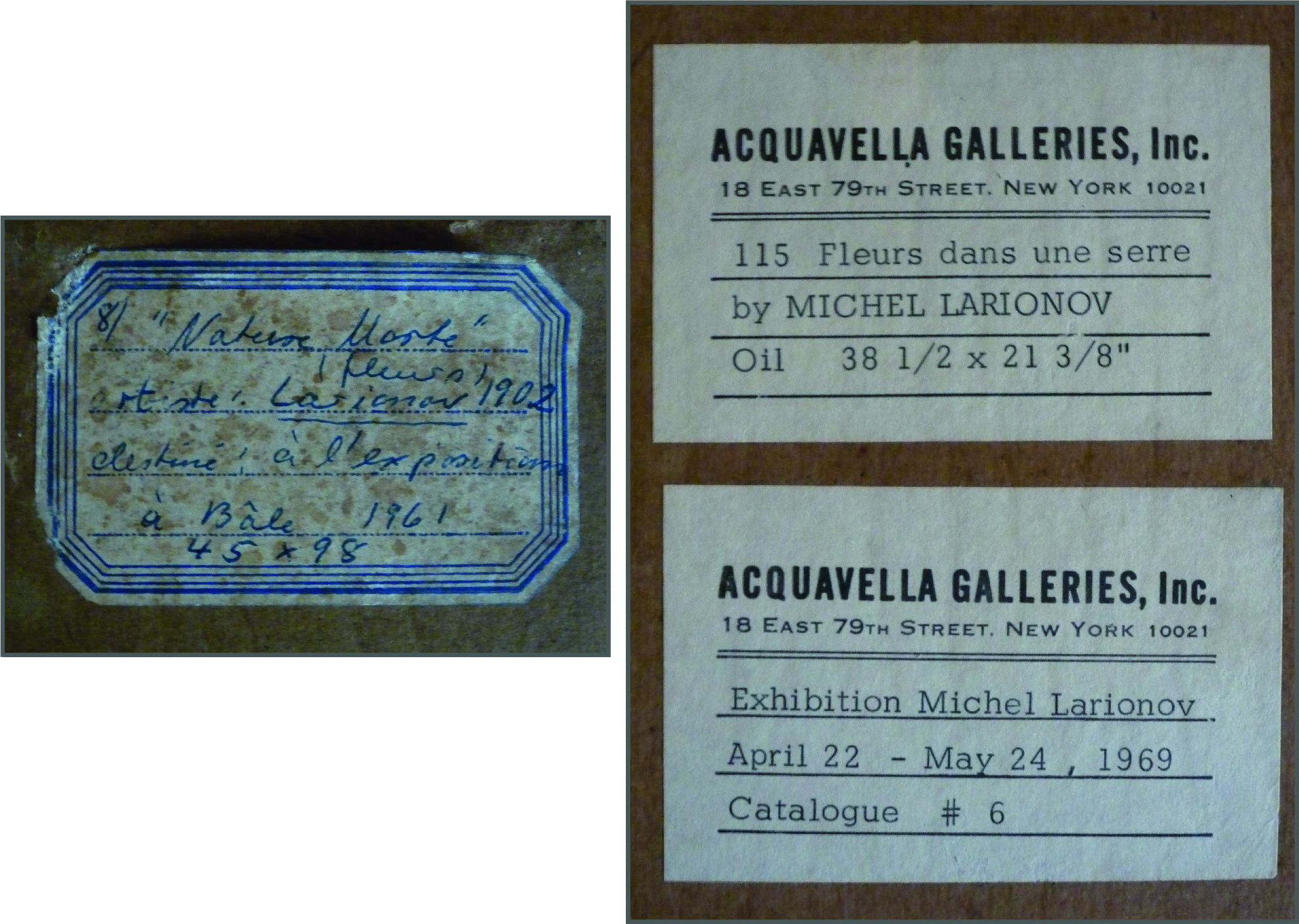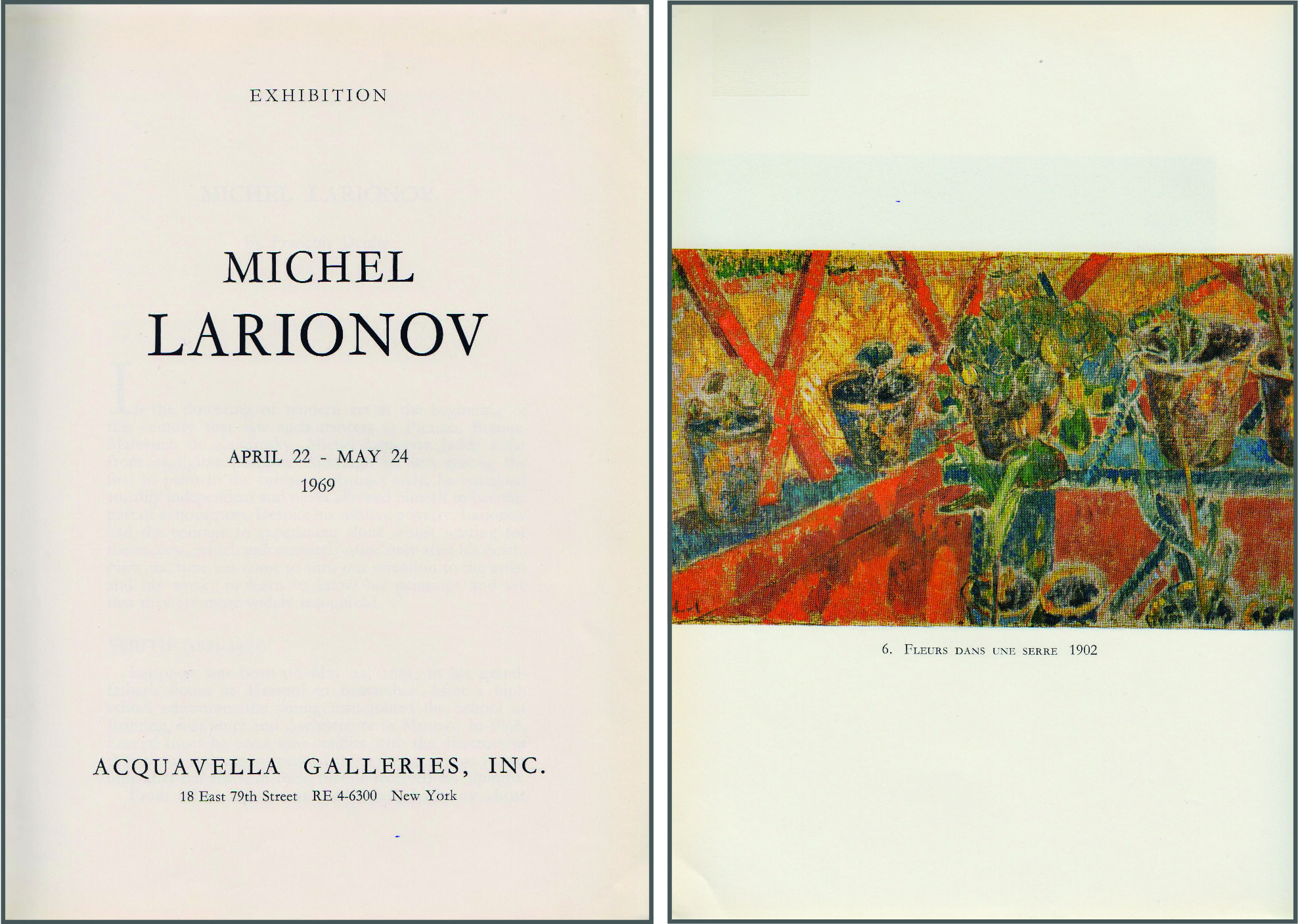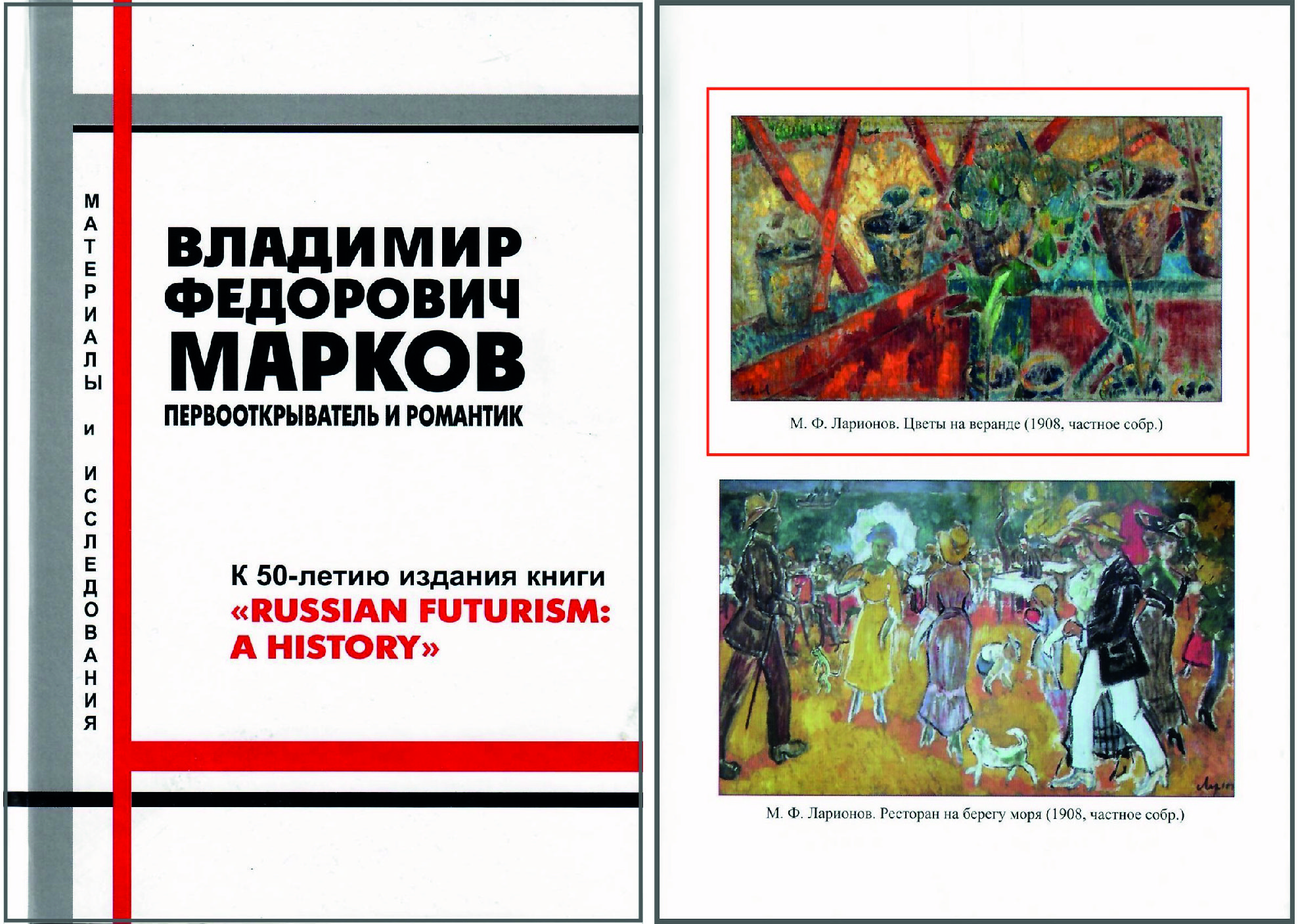Important Russian Art
1 December 2021

◎ 32. LARIONOV, MIKHAIL (1881-1964)
Flowers on a Veranda, signed with initials.
Oil on canvas, laid on board, 54.5 by 97.5 cm.
600,000–900,000 GBP
Executed in 1908.
Provenance: Alexandra Tomilina, the artist’s widow, Paris.
Important Russian Art, MacDougall's, 27 May 2012, Lot 25.
Private collection, Europe.
Certificate of authenticity from I. Vakar.
Exhibited: Larionov-Gontcharova, Galerie Beyeler, Basel, July–September 1961 (label on the reverse).
Michel Larionov, Acquavella Galleries, New York, 22 April–24 May 1969, No. 6 (label on the reverse).
Literature: Exhibition catalogue, Michel Larionov, Acquavella Galleries, New York, 1969, No. 6, illustrated.
A. Krusanov, N. Firtich, Valdimir Fedorovich Markov. Pervootkryvatel i romantik. K 50-letiiu izdaniia knigi "Russian Futurism: A History". Materially i issledovaniia, St Petersburg, Appolon, 2019, pp. 440-441, mentioned in the text and illustrated.
Flowers on a Veranda is one of brilliant examples of Mikhail Larionov’s painting from his early period. The artist himself later dated it to 1902, hence the date on the reverse of the canvas (the same date is to be found on the reverse of the painting Oxen at Rest, 1908, State Tretyakov Gallery). However, comparison with Larionov’s reference works in the State Tretyakov Gallery, the State Russian Museum, the Centre Pompidou, and other museums and private collections enables the exact date to be established – 1908. That was the year when the artist’s work veered away from Impressionism towards Fauvism: he became more interested in colour, its intensity and luminosity, and in bold and unexpected colour combinations. Critics have compared Larionov’s painting from this period with the works of Henri Matisse. In this still life, Larionov is also experimenting with composition by balancing the top and bottom of the canvas, and with texture by seeking to achieve a delicate and exquisite resonance.
The painting’s provenance from Larionov’s studio, and then from the collection of his second wife, Alexandra Larionova-Tomilina, is confirmed by an old photograph of the picture from the archive kept by Alexei Kovalev (1944-1992), who conducted careful research into the artist’s work.
We are grateful to the expert Irina Vakar for providing additional catalogue information.
In the present lot, the composition is based on two main colours, red and yellow, with the addition of blue and green to reinforce the contrast. Almost everywhere, the blue serves to demarcate the yellow from the red zones. Only where light dominates completely, flooding into the room through the window panes, does a fiery red abut directly on to a bright yellow injecting an extraordinary colouristic force into the composition. The pot plants seem to be indoors but at the same time bathed in bright, exterior daylight. According to Gleb Pospelov, a renowned expert on the artist, “the light in Larionov’s works seemed to shine through a flattened reality. It somehow issued from the phenomenon of life itself… a radiance animated from within which permeated all living things: this was the defining essence of his art. The whole of Larionov’s oeuvre was a benediction on that which was alive and living, the like of which was completely absent from the work of other Russian painters at this time.”
Despite their simplicity, the objects arranged on the veranda create a feeling of dynamic equilibrium. The pot holding the plant with luxuriant foliage emphasises the centripetal movement of the composition towards the corner of the veranda, literally dividing the picture into two practically equal halves. At the same time, the general structure of the picture is defiantly fragmentary: the flowerpots in the bottom row barely protrude from the edge of the canvas and the right-hand corner of the composition is dramatically cropped along both edges. The framing is extremely tight. It is as if the scene has entered the artist’s field of vision quite by chance. Larionov was not sitting down at a table to paint his still life, as Cézanne had done, but standing, and because of his significant height objects seem to retreat downwards, beyond the confines of the picture area. By doing this he creates the impression of dynamism, so important in avant-garde art of the early 20th century, of the motion of the human eye as if it were skimming across the line of plants by the window. The artist has placed an analogous counterpoint in the paint layer of the picture: He counters the firm, stationary mass of the ochre clay pots, the blue table and solid, wood-clad terrace wall, dappled with a pattern of shadow, with the Van Gogh-style light that streams through the window, seemingly “quilted” in thickly-impastoed, multi-directional brush-strokes.
Larionov’s paintings were truly unique in European Post-Impressionist art. His dedication to “the living world” was inseparable from his extremely perceptive experiments in “liberating the paint layer”. It is no coincidence that in his pictures of the 1900s the “element” of paint confronts the elements of nature. The energy in Larionov’s best canvasses of the period is created from this very desire for equilibrium in the confrontation of these forces and this is clearly seen in the present lot.
In Flowers on a Veranda, with its tendency to generalise the impact of the palette, its fusion of individual brushstrokes into one splash of colour and its decorative resolution of the whole, we clearly see Larionov establishing himself as one of the founders of the Russian avant-garde and as a major artist of the 20th century, head and shoulders above his contemporaries.
1961 and 1969 exhibition labels on the reverse of the present lot.
The present lot as illustrated in the 1969 exhibition catalogue.
The present lot as mentioned and illustrated in the 2019 publication.



Notes on symbols:
* Indicates 5% Import Duty Charge applies.
◎ Indicates the lot is located in Russia. Please note that permit for export from Russia has not been obtained. Successful bidders would collect their lots in Moscow after payment.
Ω Indicates 20% Import Duty Charge applies.
§ Indicates Artist's Resale Right applies.
† Indicates Standard VAT scheme applies, and the rate of 20% VAT will be charged on both hammer price and premium.